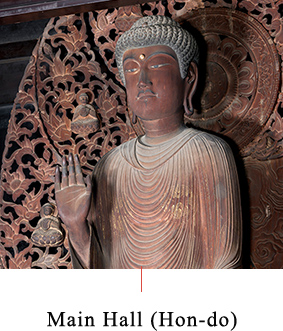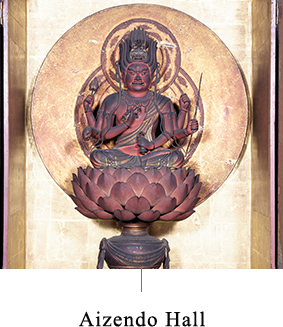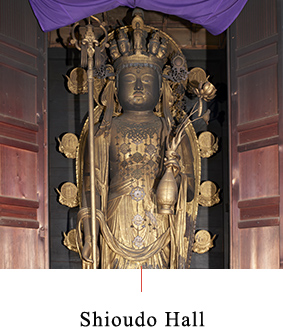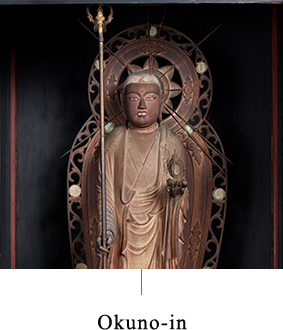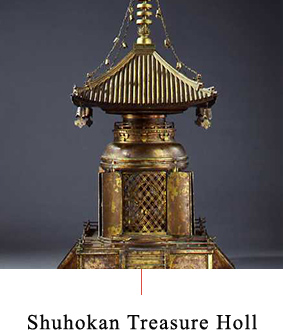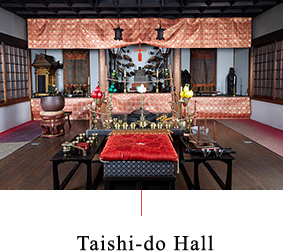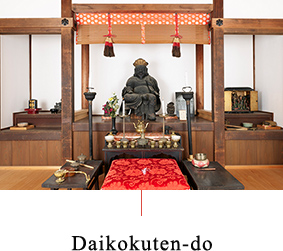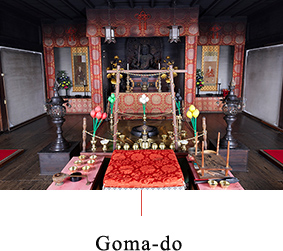Aizendo Hall


Statue of Aizen Myo-o
Important Cultural Property
Aizen Myo-o is one of the Wisdom Kings in Buddhist belief. The Wisdom Kings are usually represented as angry deities who serve as guardians of the teachings of Buddhism. Carved by the Buddhist priest Zen’en in 1247, this six-armed statue has a wrathful expression and is set off against a circular background by its red color.
The Aizen-Do hall, which houses the statue, has several features. Measuring 14.4 meters wide and 19.8 meters long, the building was moved here from Kyoto in 1762. Originally it was a house owned by the aristocratic Konoe family, and thus has architectural elements of a residence of the upper stratum of society. The central section of the Aizen-Do is divided into the innermost part and the outer part. On the north is Kyakuden, a reception area for distinguished visitors and on the south is Otamaya, a memorial area for commemorating successive head priests.
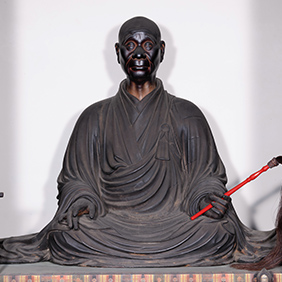
Statue of Eison
Important Cultural Property
The Buddhist priest Eison (1201–1290) revived Saidaiji Temple in the Kamakura period (1185–1333) after centuries of neglect. His disciples commissioned the sculptor Zenshun to create this statue when the priest turned 80. The highly realistic rendering shows Eison to be a vigorous, deeply sincere teacher.
Eison’s generosity and care for the less fortunate is reflected in the origin of the Ochamori-shiki Tea Ceremony, in which groups of people share tea from outsized bowls. As the story goes, in the first month of 1239, after finishing a prayer service at Saidaiji’s Chinju-Hachiman Shrine, Eison offered tea to the gods. He then distributed the remaining tea to local parishioners. At the time, as tea was considered an expensive form of medicine, most people had never had the opportunity to enjoy it with others. This grew into a tradition of people young and old gathering to drink matcha green tea from an exceptionally large bowl measuring over 30 centimeters in diameter and weighing some 7 kilograms. The term ochamori is a play on sakamori, or drinking party, and signifies a convivial enjoyment of drinking tea (cha) rather than alcohol, which was proscribed in Buddhism.
More than 750 years after Eison introduced it, the Ochamori-shiki Tea Ceremony continues to be a popular event at Saidaiji. It reinforces the ties between the temple and its parishioners, as well as bonds between family, friends, and Buddhists from everywhere. It is also a reminder of Eison himself and his generosity toward all people.
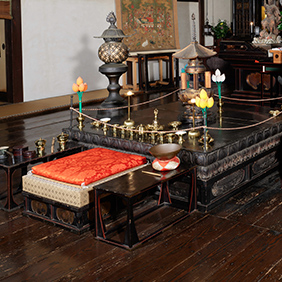
Large Flower-shaped Platform
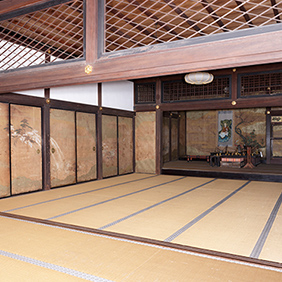
Kyakuden

